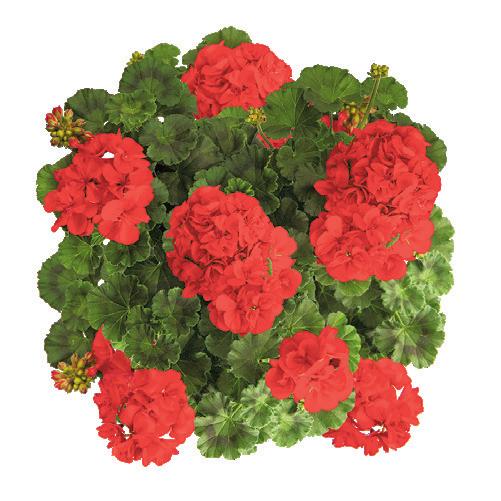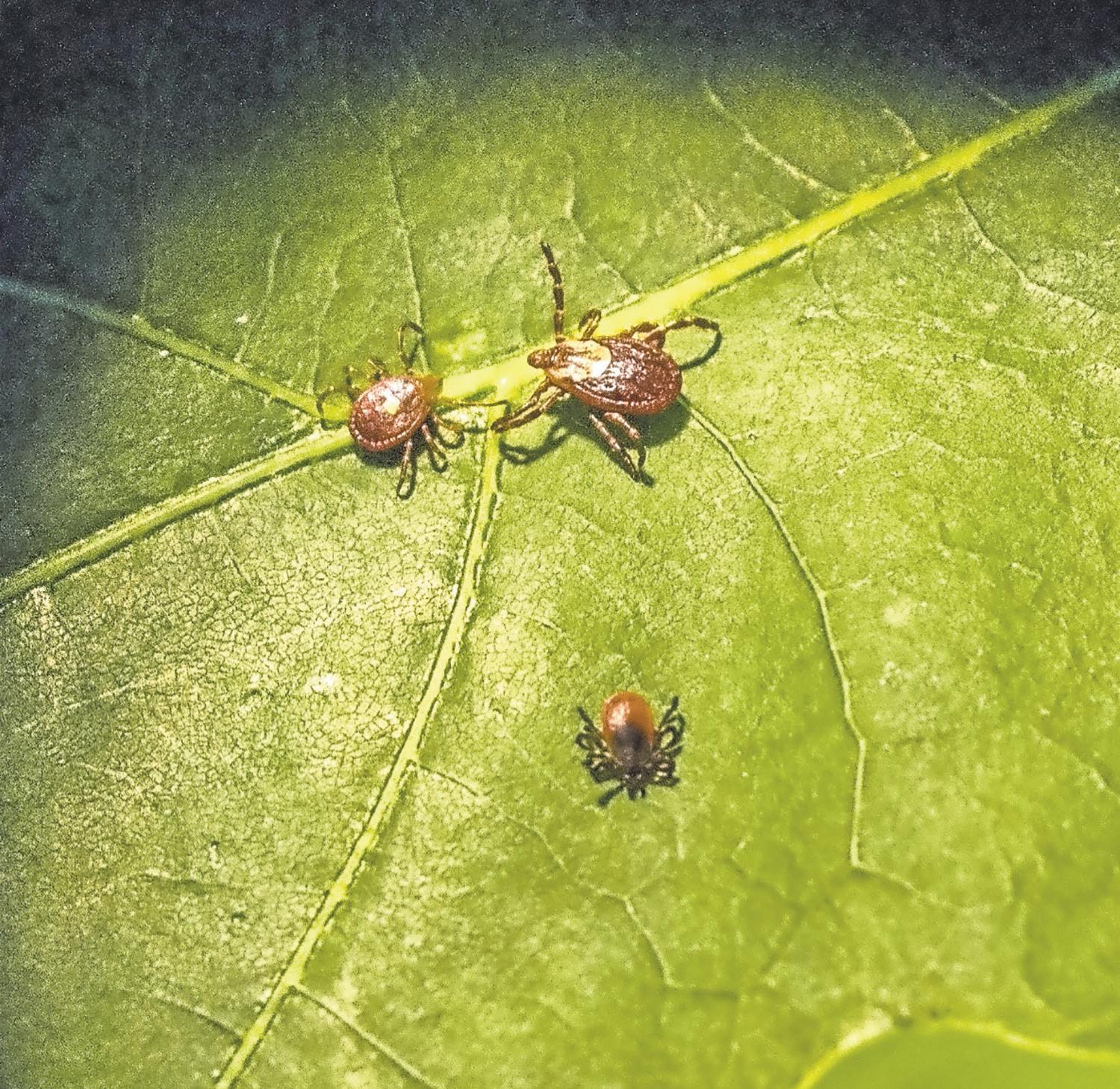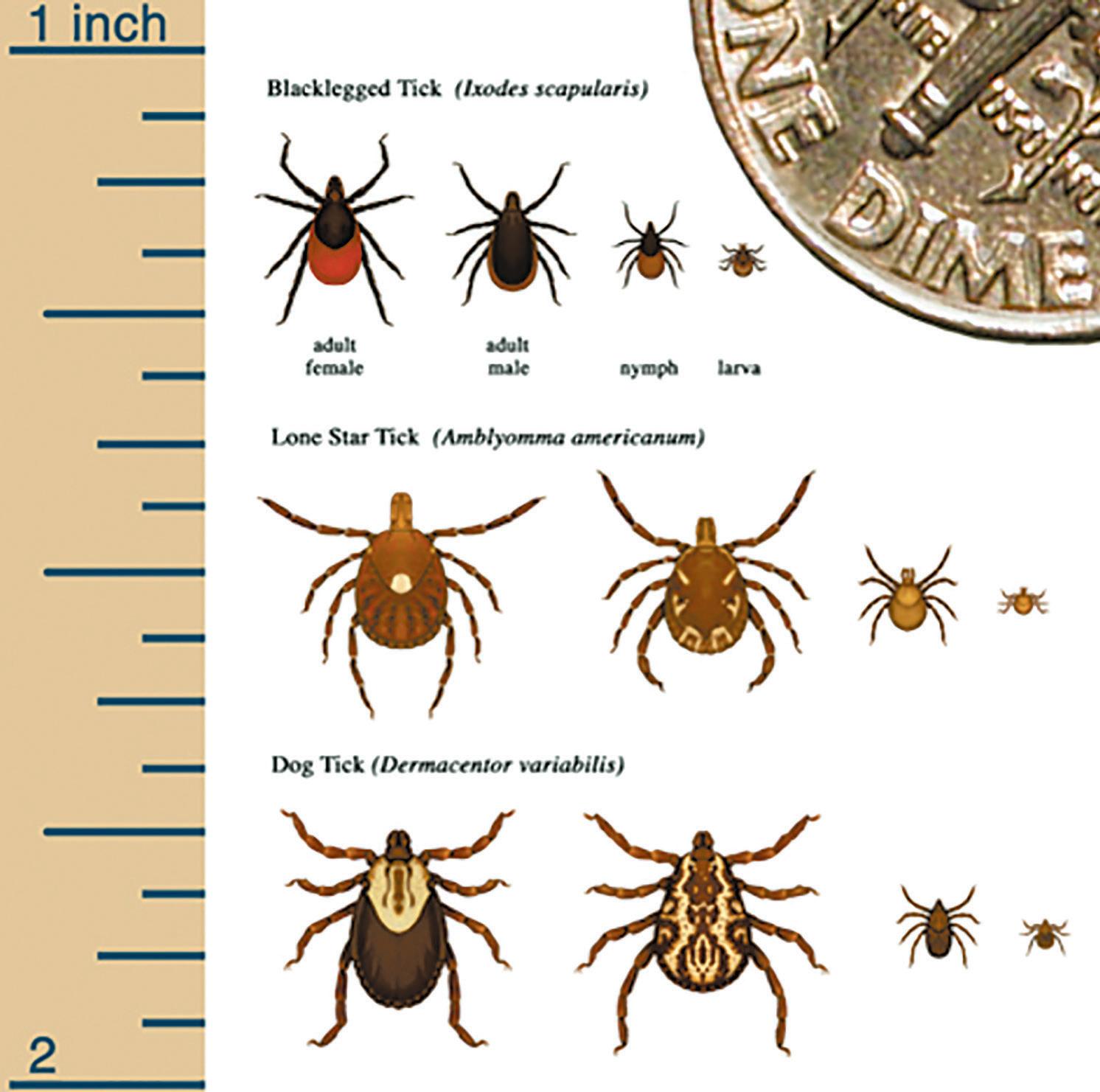
3 minute read
It’s Tick Season
By Andrea Busche
At long last, spring is upon us. Most of us are eagerly anticipating flowers and warm, sunny days. But along with all of the season’s beauty, Mother Nature has also bestowed us with a creepy-crawly pest who emerges as soon as the snow melts: ticks.
According to Dave Neitzel, supervisor, Vectorborne Diseases

Unit for the Minnesota Department of Health, there are actually 12 known species of ticks in Minnesota. But we only have to worry about a few of them.
“Not many species of ticks feed on people,” he said. “Many are what we call ‘host-specific,’ where they feed only on birds or certain mammals. But the blacklegged tick (formerly known as the deer tick), is the biggest one to worry about. And the American dog tick (also known as a wood tick), is mostly just a pest in Minnesota, but can also pass along rare illnesses like Rocky Mountain spotted fever and tularemia.”
Ticks emerge at different times of year depending on their life stage. To be safe, plan on it being “tick season” from the time the snow melts through the end of the summer.

Illnesses
There are several illnesses that can be passed along to humans through a tick bite, including:
▶ Lyme disease – 950 cases reported in Minnesota in 2018
▶ Anaplasmosis – 496 cases reported in Minnesota in 2018
▶ Babesiosis – 49 cases reported in Minnesota in 2018
▶ Ehrlichiosis – 7 cases reported in Minnesota in 2018
▶ Relapsing fever illness – 2 cases reported in Minnesota in 2018
▶ Powassan virus – 3 cases reported in Minnesota in 2018 Many of these illnesses can also be transmitted to animals, including dogs. Lyme disease is rapidly on the rise in Minnesota. Researchers have proven that between one-third to half of adult blacklegged ticks in our state have the Lyme disease bacteria. And, about 20% of the young nymphs are infected.
TICK SEASON: Page 4
The blacklegged tick, shown in the lower right, is much smaller than the American dog tick, shown in the upper right. The lone star tick, in the upper left of this photo, is a little smaller than the American dog tick but larger than the blacklegged tick.

Tick Season
From Page 3
Some ticks are infected with three, or even four, of the diseases listed above.

And when it comes to your pets, speak to your veterinarian. There are several topical and oral products which can prevent ticks from biting your pet. And, while there currently is not a Lyme disease vaccine for humans, there is one available for dogs.
Neitzel has several tips for keeping yourself, and your pet, safe this season.



“Be on the lookout,” he said. “Ticks like wooded, grassy, and brushy areas, and are most likely found on the forest floor or near the ground, up to knee height. Ticks don’t climb trees, and they can’t fly and land on you. You have to come into contact with them.”
Neitzel recommends using a good tick repellent containing DEET. Or, even better, a repellent containing permethrin, which can be applied to clothing. It’s always a good idea to wear long pants, and tuck your pants into your socks, too.
If You Are Bitten
After being outdoors, it is imperative to do a good “tick check.” Ticks are tiny, though, so they can be very difficult to see. A blacklegged tick in the nymph stage is only one millimeter long, which is about the size of a poppy seed.

Ticks must be attached to your body for one to two days to transmit disease. So, early detection is key. If you find a tick on your body, Neitzel recommends removing it promptly, by grabbing it as close to the skin as possible, using either a tweezers or your fingers.
There is no need to see a doctor if you have been bitten, unless you are showing symptoms of illness. These include fever, chills, muscle and joint aches, or an expanding red rash around the bite. You should also see a doctor if you find a blacklegged tick attached to your body that is engorged with blood. This would indicate it has been attached for more than the one- to two-day period, and a short course of antibiotics may be recommended.
As we head into spring, keep ticks at the forefront of your mind whenever you spend time outdoors.


“The bottom line,” Neitzel said, “is that once the snow melts, start looking for ticks, use a good repellant, and remove them ASAP.”
For more information, please visit www.health.state.mn.us/ diseases/tickborne/index.html.







